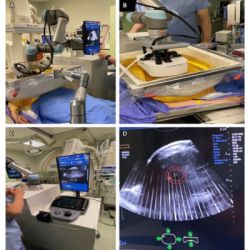A research team
from the Eindhoven University of Technology has recently developed a
contrast-enhanced, ultrasound imaging method, which enables dynamic contrast
specific ultrasound tomography (DCS-UST), in order to offer a breast-friendly
and safer alternative to mammography.
The regular screening method for detecting breast cancer, the mammogram, is unpleasant, as it requires the breast to be squeezed tight. Moreover, it can be a contributor to the onset of cancer. More than two-thirds of the cases where a worrying anomaly is found on the X-ray images are false positives. Scientists thus seek alternatives in order to reduce or even eliminate such issues. Libertario Demi and colleagues, of UT Eindhoven, have developed a new technology in which the patient lies on a table and the breast hangs freely in a bowl. The method is known as ‘cumulative phase delay imaging (CPDI)’ and uses special echography, i.e. inaudible sound waves, to create a 3D image of the breast. The researchers expect that the rates of false positives will be much lower, as the technique generates images in which any tumour is clearly identifiable.
See also : Dream Imager for Breast Cancer Diagnosis
CPDI will lead to “a more practical, faster, and less operator-dependent imaging procedure compared to standard echo-contrast, while preserving accurate imaging of contrast kinetics.” Moreover, it can find clinical applications as a diagnostic method for breast cancer localisation. The researchers are planning to start performing preclinical studies once they put together an international, expert medical team. Application of the new technique is estimated to be ten years away. It is also expected that the new technology will probably operate in combination with other methods. The team’s future work will focus on “taking new measurements with a breast ultrasound computed tomography scanner on heterogeneous and more complex flow-phantoms, with the ultimate aim of transferring our technology to patients.”
Source : Scientific Reports



























